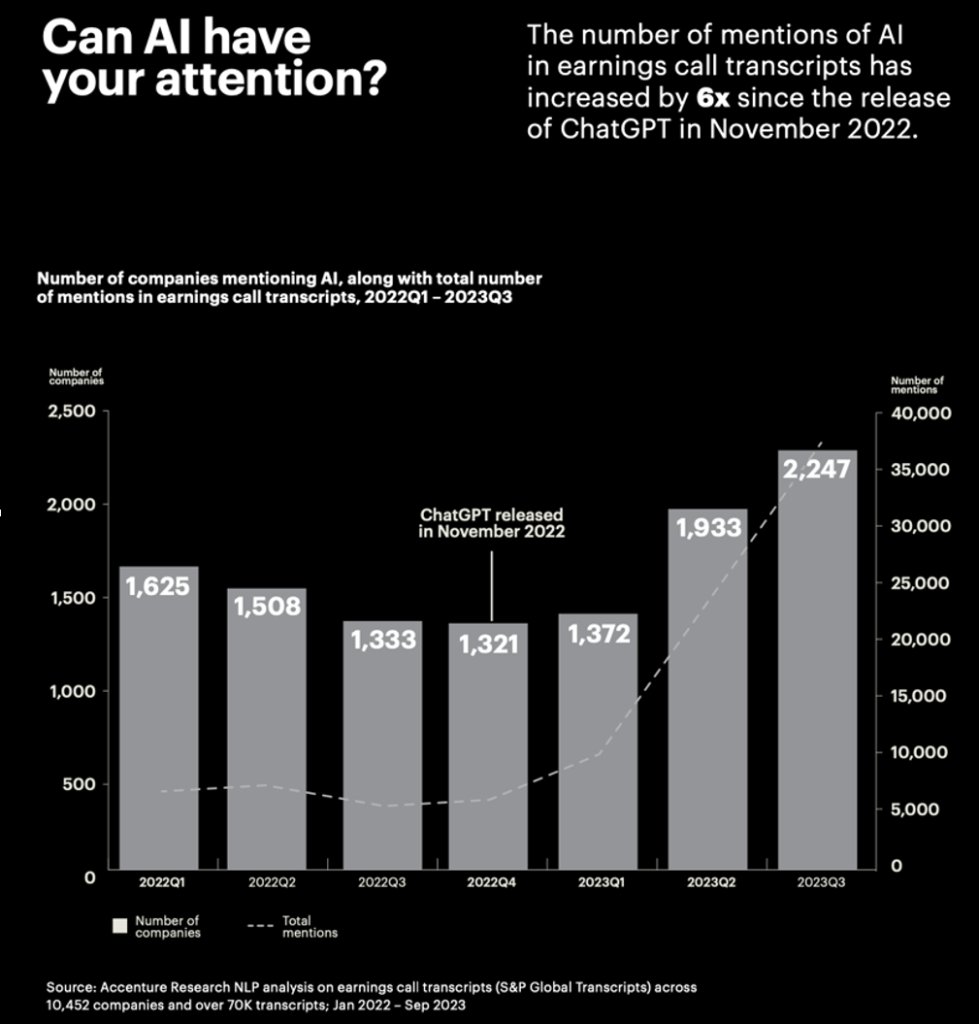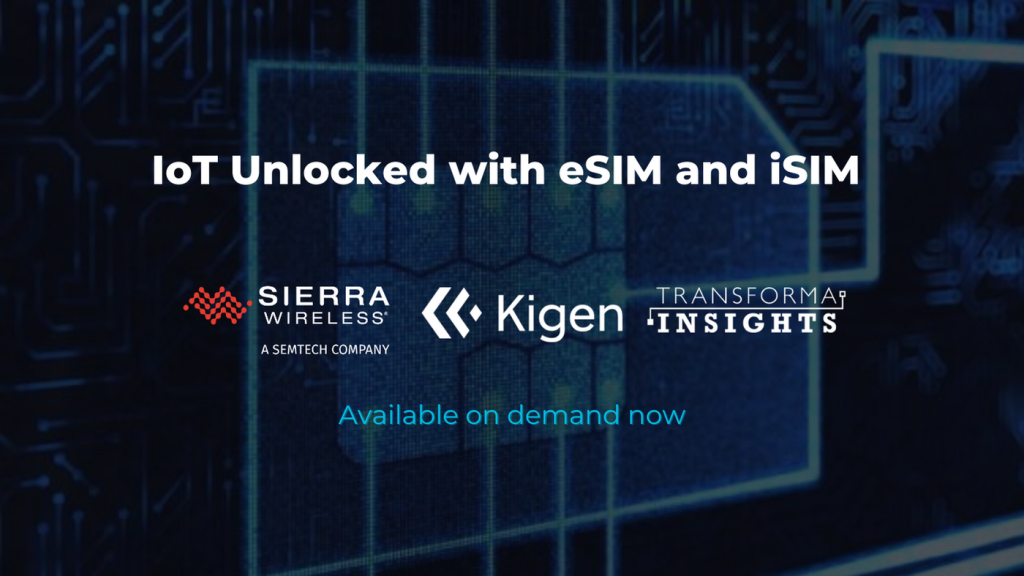
- Resources
- Blog
2024 is being shaped by eSIM technology
Five innovative eSIM and iSIM services for 2024
In the world of IoT security, where we operate at Kigen, we are experiencing a seismic shift in customers using eSIM and iSIM technology to solve a widening range of business problems. The advantages include manufacturing uptime, optimizing equipment availability and maximizing business performance.
The year ahead is poised to bring about important strides in smart energy, logistics, mobility, healthcare and many more. Here are five ways innovative products and services with eSIM and iSIM technology are set to shape the rest of the year.
1. Traveller eSIMs: Staying connected on the move
As consumers, we rely heavily on our connected apps, which we expect to work seamlessly when traveling. To this end, we’ve seen a shift from plastic SIM to the more flexible eSIM, which avoids the swapping of physical SIM cards. Meanwhile, subscribing to out-of-home-territory networks has become simpler through QR codes. Experts predict a three-digit percentage increase in travel eSIM plan adoption observed in Asia-Pacific (early adopters) from 2021 to 2023. India, Brazil, China, Australia, and UAE lead this traction.
500% predict growth for Travel eSIM retail market between 2023 and 2028 as leisure and business travelers embrace cheaper eSIM travel plans (Kaleido Intelligence Research, Oct 2023)
For business travel, eSIMs can support cost-savings and further advantages in managing device fleets across enterprise devices. By bringing the improved ease of connectivity provisioning of Consumer eSIM to IoT, the new SGP.32 specification also supports other services that hugely improve connectivity on the move.
Take the example of connected aviation. Airports are essentially small cities: Paris’ Charles De Gaulle airport employs over 230,000 professionals who use connected services to improve the traveler experience while maintaining ambitious goals for the airport to be sustainable and smart. Private networks, combined with new RSP approaches, simplify digitalization for an airport that never rests! It’s a great example where 5G, IoT, private networks, and added intelligence in device ecosystems converge, all supported by security (in multiple forms) safeguarding human and infrastructure safety.
2. Moving out of cell signal: Satellite IoT Connectivity for remote areas
Only about 10% of the Earth’s surface has access to terrestrial connectivity services, which leaves a massive opportunity for satellite IoT communications, especially in remote outdoor locations such as gas fields, mining sites, and mountain wilderness. In these scenarios, ruggedized devices for remote workers are key to worker safety – such as the Ulefone ARMOR 23 ultra-rugged phone, recently launched at CES 2024.
39.6% – the predicted compound annual growth rate (CAGR) of satellite IoT subscribers to reach 23.9 million units in 2027 – (Berg Insights, Sep 2023)
500+ million workers worldwide require business-critical connectivity as those employed in rural, forestry, logistics, remote teams, and utilities – (Bullitt satellite messenger service usage estimates, 2023)
As new approaches and initiatives gather pace, with 5G 3GPP standardization Release 17, companies such as Skylo are leveraging terrestrial wireless IoT connectivity for satellites. Skylo and Kigen are delivering new innovative experiences, such as voice-enabled via cellular and hybrid satellite on ruggedized smartphones, smartwatches, and pure-IoT product platforms.
Depending on their needs, OEMs can choose if these functionalities are enabled via SIM, eSIM, or iSIM. Ultimately, connectivity can be a lifeline, and with unique devices such as satellite messaging dongles/tags, vital on-device connected experiences are moving beyond the smartphone. “On-device AI” is a fast-emerging development with more computing power and an explosion in sensor data from the Internet of Things.
These factors combine, enabling AI to process data on devices with direct user contact rather than piping everything to the cloud, which can carry privacy risks. This opens a new way to personalize experiences. For OEMs looking to be leaders in this space, integrating security into their sensors, devices and through the tech stack is necessary.
At Kigen, we have been talking about machine learning, the applications of machine intelligence for some time, and the fact that LLMs can now be run on readily available computing platforms such as Raspberry Pi. As AI capabilities propel forward, we may see them co-exist and collaborate through ecosystems to offer personalized user experiences.
In this interlinked context, where ‘AI agents’ aid or take actions on behalf of users, it is paramount that the data exchanges are secure –device sensors, processors, and cloud.
3. AI ecosystems: agents of disruption
ChatGPT captured global attention to the transformative potential of artificial intelligence last year. The LLMs behind ChatGPT, Bard and others mark a significant turning point for machine intelligence with two key developments:
- AI finally grasped the intent and language complexity fundamental to human communication – for the first time, machines can express answers, bring up context and be independently generative.
- AI can now adapt to a wide range of tasks and can be repurposed or reused in various forms by using the vast amount of training data in rich text, video, lyrics and image formats
–97% of global executives agree AI foundation models will enable connections across data types, revolutionizing where and how AI is used – (Accenture Technology Vision 2023)
–6x increase in the mentions of AI in earnings call transcripts since the release of ChatGPT in November 2022 – (Accenture research NLP analysis on earnings call transcript (S&P Global transcripts) across 10,452 companies and over 70k transcripts Jan 2022-Sep 2023)



Number of companies mentioning AI since Q1 2022
Security Outlook
Ways to exploit AI/ML models have jumped from whiteboard theory to practical attacks. Government contractor MITRE and a group of technology firms have created an encyclopedia of adversarial attacks on AI systems. Known as the Adversarial Threat Landscape for Artificial-Intelligence Systems, or ATLAS, the classification of techniques includes abusing real-time learning to poison training data, like what happened with Microsoft’s Tay chatbot, to evading the ML model’s capabilities, such as what researchers did with Cylance’s malware detection engine.
4. Industrial IoT: scale with purpose
2023 was believed to be the year when the world reached the tipping point for solar renewable power generation to become more cost-efficient than other non-renewable sources. This massive milestone likely went under most people’s radar and is only possible due to the vast concentrations of solar power stations.
–89% reduction in the cost of electricity from solar plants due to wide-scale renewable power generation during the period between 2010-2022, and that of batteries from 2008-2022 that complements this -(UCL Bartlett School of Environment, Energy & Resources, 2023)
– 2050 – the year solar power is expected to dominate electricity generation even without more ambitious climate policies in the pursuit of net-zero emissions – (The momentum of the solar energy transition)
Solar represents a distributed energy generation scenario and the types of places these are installed in present a challenge to ensure optimal management of the panels. This is where cellular IoT steps in – equipping solar panels, inverters and ‘hubs’ with NB-IoT modules, MFF2 5mmx6mm SIMs or eSIM technology, which allows many advantages.
- Simplifying the initial installation of devices in the field and testing capacity
- Remote asset monitoring for optimal performance
- Integration of distributed smart grid sources
Kigen has equipped the world’s leading energy sector players for smart grid integration of solar installations at the height of component shortages when lead times were high and costs were aggressive across the production lifecycle. In the great chip shortage of 2021, work on pressing ahead with a ramp-up in volume and exacerbate slippages and timescales.
This meant that many electronics manufacturers had to work together to support the customer, use stock they’ve held in storage with older date codes or source their components from channels outside of their regular supply chain. This can present a serious problem without extremely diligent reviews of the conditions in which
Power to the people: homegrown ecosystems
Many countries have updated their regulations on connectivity, data sovereignty, and data protection, including localization laws. As a result, permanent roaming policies can change to protect the security of local networks and avoid large numbers of roaming devices.
162 – Total number of countries that have enacted data privacy laws that regulate the use of eSIM data from February 2021
Kigen is committed to growing ecosystems locally to support how eSIMs open digital opportunities securely. IoT devices with eSIM can switch network providers and roaming profiles every 90 days to mitigate roaming charges. Homegrown ecosystems will no doubt gain further traction as the new IoT eSIM specifications kick in to simplify connectivity provisioning.
5. Just-in-time profile provisioning
During the manufacturing of smart meters and other IoT devices, provisioning of MNO connectivity in the field considerably impacts battery drain. For this reason, original equipment manufacturers (OEMs) can now take advantage of direct sourcing and provisioning in the factory – offline, online and via EUM for embedded connectivity profiles just before their devices ship.
Kigen’s Just-in-time profile provisioning and eIM support all types of eUICC with customization, making manufacturing devices for global deployment easier.



